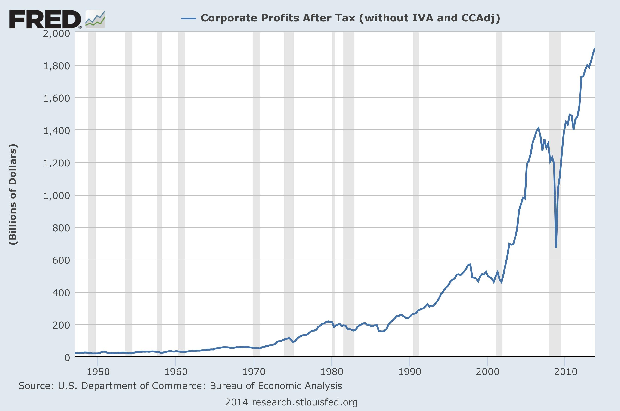Is the bull market drawing to a close?
Investors have been badly rattled over the last few weeks. For the first time since the fiscal cliff caused a mini-panic on Wall Street way back in December 2012, the easy, low-volatility rise in stock prices we've enjoyed is under threat.
Indeed, it all appears to be coming apart now as former high-fliers in areas like technology and biotech fall from the sky, wings scorched like Icarus after flying too close to the sun. The big question: How bad could the damage be?
The Dow Jones industrial average, for instance, is down only 2.8 percent from its all-time high. The credit markets also are holding up, with corporate bonds resilient. The fundamentals, while turning a little negative, also aren't suggestive of a dramatic pullback in corporate profitability or the start of a new recession.
Instead, after the record run-up in stocks over the last three years, fueled mainly by bullish sentiment rather than any great acceleration in corporate earnings, this looks like a long overdue correction. So figure a total peak-to-trough decline of 10 percent to 20 percent -- just enough to put a little fear back into the hearts of what had become a complacent, overconfident market.
You can see this in the way the rally out of the 2012 lows was three parts an expansion of price-to-earnings multiples and one part actual earnings growth. It's been all about sentiment. A little pause that refreshes is healthy.
Stepping back from the daily cut-and-thrust, including worries like the situation in Ukraine, volatility in the currency markets and debt troubles in China, the bigger factor is that corporate profit margins are coming under pressure. This as the revenue growth enjoyed early in this bull market, and the cost-cutting that sustained earnings growth more recently, is giving way to pressure on the expense line as the labor market tightens.
More simply, it's time for Main Street to start fully reaping the benefits of the expansion as Wall Street and the CEOs take a backseat.
Gluskin Sheff economist David Rosenberg sums it up like this: "Maybe the stock market is having some trouble digesting the news that it is going to start to have to share the income spoils with the working class at the expense of profit margins. So be it."
The market is also digesting the reality that, after embarking on the most aggressive use of cheap money stimulus in human history, the Federal Reserve is poised to raise short-term interest rates. They've been at near zero percent since 2008. But around this time next year, they are going to start creeping higher.
Again, this is a healthy development. It's well past time for interest rates to start being normalized given the risk of fueling asset price bubbles.
Still, while the long-term outlook for the economy looks good -- especially for working Americans -- the near-term outlook for the stock market still looks dangerous.
Significant technical support has been taken out, with the Nasdaq falling below its 20-week moving average for the first time since 2012; the Russell 2000 small-cap index testing its 200-day moving average for the first time since 2012; and biotech stocks as represented by the Biotech iShares (IBB) fund suffering its worst wipeout since 2011.
And there is some complacency still in the air. This can be seen in the relatively minor rise in the CBOE Volatility Index (VIX) or "fear gauge" thus far. While the Nasdaq slipped below the 4,000 level last week for the first time since February, the VIX finished at 17, versus a high of 21.5 hit back in early February.
Jason Geopfert of SentimenTrader notes that there have only been two other times in the past 20 years (March 28, 2002, and May 15, 2008) when the Nasdaq dropped more than eight percent from a 52-week high while the VIX was still below 17.5. The S&P 500 went on to lose more than 15 percent in the three months that followed both those dates.
Overall, investors should remain cautious and defensive, raising a little cash and booking profits in extended positions. Treasury bonds have been on a roll lately as folks seek out safe havens. The leveraged Direxion 3x Treasury Bond Bull (TMF) is up more than 7.2 percent since I added it to my Edge Letter Sample Portfolio back on February 26.
Disclosure: Anthony has recommended TMF to his clients.
Anthony Mirhaydari is founder of the Edge and Edge Pro investment advisory newsletters, as well as Mirhaydari Capital Management, a registered investment advisory firm.


